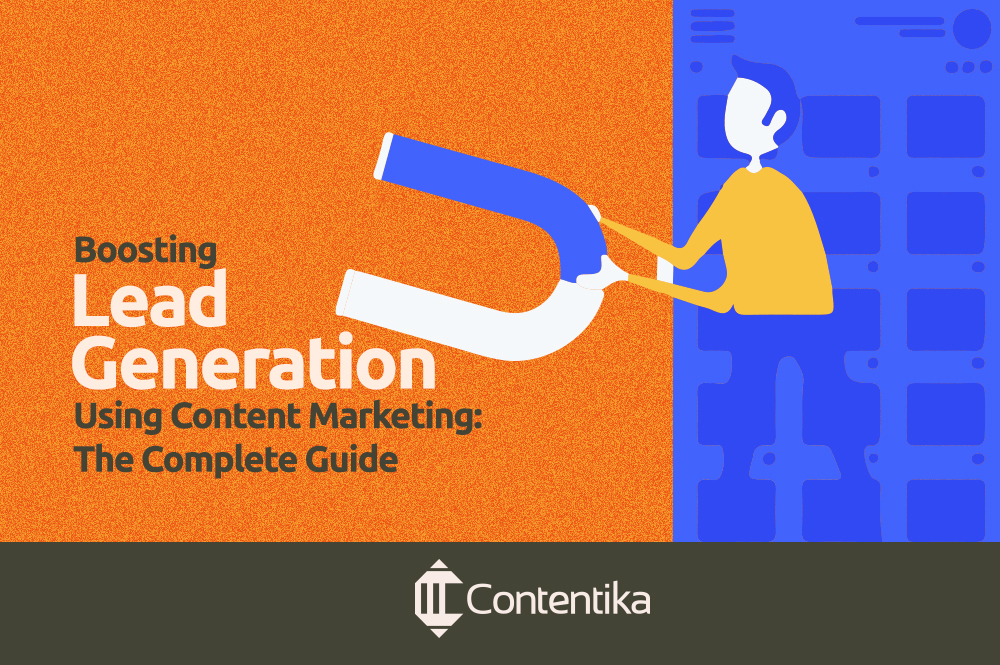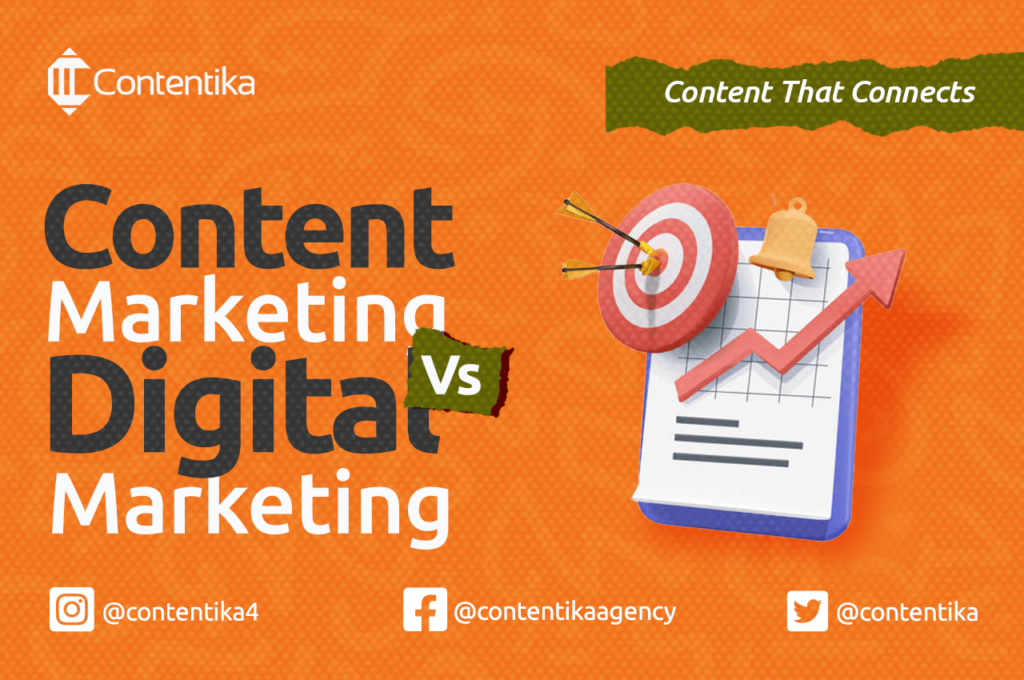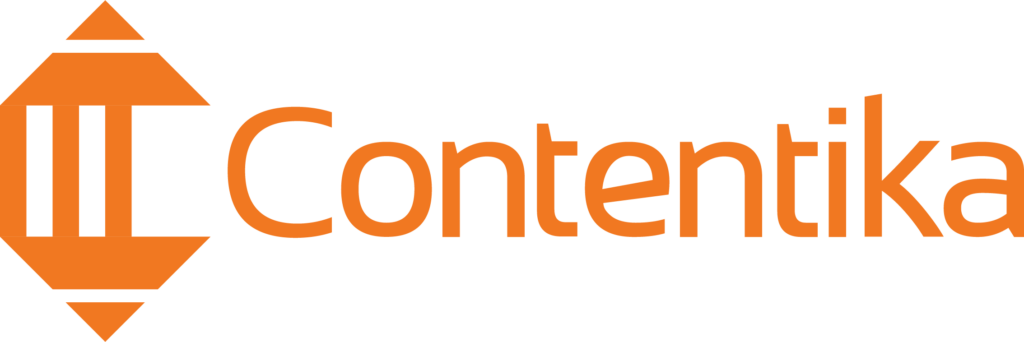The Ultimate Guide to a Successful SEO Content Marketing Strategy [+Free Template]
Looking to drive website traffic and conversions through SEO? This blog post provides a comprehensive content marketing and SEO strategy for doing just that.
How to Attract, Engage, and Convert Customers: Content Strategy 101

Here’s a comprehensive guide on how you can create a content marketing strategy that attracts customers, increases engagement and conversion rates, and helps build your brand.
Boosting Lead Generation Using Content Marketing: The Complete Guide

Today, about 94% of B2B small businesses make use of content marketing in their digital marketing efforts. Despite its widespread adoption, many businesses struggle to effectively use content marketing for lead generation and maintaining profitability. The US Bureau of Labour Statistics estimates that despite having a content marketing strategy, approximately 20% of these small businesses fail in their first year, an additional 45% during the first five years, and 70% during the first 10 years. Clearly, a content marketing strategy is no magic wand that immediately solves all lead generation woes. However, when used properly, content marketing can be a powerful tool for lead generation. This blog post will discuss how you can effectively use your content marketing efforts to drive leads and convert them into customers. We have prepared an ultimate content marketing guide and curated practical battle-tested steps guaranteed to help generate quality leads. Lead Generation Through Content Marketing What comes to mind when you hear the word “lead”? You’re probably thinking of scenes from your favorite crime thriller where the detective is following a lead to solve the case. Lead generation through content marketing works in much the same way. You create content that captures the attention of your target audience, and use it as a clue to help them find you. A lead is a potential customer who has shown interest in your product or service. Any content marketing strategy aims to attract the right audience, engage them, and ultimately generate leads that can be converted into customers. Imagine you own a skincare brand and have created a blog post about the benefits of using natural ingredients in skincare products. A reader who clicks on the article, reads it, subscribes to your newsletter, and finally makes a purchase can be considered a lead generated for your skincare brand through your content marketing efforts. Therefore, lead generation through content marketing involves creating valuable and relevant content that attracts your target audience to your brand, provides solutions to their problems, and encourages them to take a desired action. Such action could include filling out a form, subscribing to your email list, or purchasing a product. Benefits of a Lead-Generating Content Marketing Strategy Apart from attracting and converting quality leads, a strong content marketing strategy can bring numerous benefits to your business. Here are some of the reasons why you should invest time and effort into creating a solid lead-generating content marketing plan: Improved Brand Awareness and Credibility By consistently producing high-quality content that addresses your audience’s needs and interests, you increase your chances of being seen as an industry expert in your niche market. This improves brand awareness and builds trust and credibility among your target audience, leading them to consider your brand when making purchasing decisions. If you are a business owner or marketer, it is important to remember that leads can come from any source. However, the quality and relevance of your content will determine whether these leads are worth pursuing and converting into paying customers. Increased Website Traffic Creating valuable lead-generation content that speaks directly to your target audience allows you to attract more visitors to your website. This ultimately drives more traffic to your website and increases the likelihood of generating leads through your content marketing efforts. Improved Search Engine Optimization (SEO) SEO has a significant impact on your website’s visibility and search rankings. By regularly producing high-quality, keyword-rich content, you improve the chances of your website appearing in the top search results on popular search engines like Google and Bing. This means that when someone searches for terms related to your industry, there is a higher chance that they will come across your website and potentially convert into leads. Increased Conversion Rates Content marketing can also improve the overall user experience on your website by providing valuable information and solutions to their problems. This can lead to increased conversions as satisfied readers are more likely to purchase or take other desired actions on your website. Expanded Reach In today’s digital age, content can easily be shared across various online channels such as your website, social media platforms, and email. This allows you to expand your reach and attract a wider audience, potentially bringing in more leads for your business. Cost Effectiveness Compared to traditional marketing methods, content marketing can be more cost-effective. Once you have created your content, it can potentially bring in leads for a long period of time with minimal additional costs. Steps to Generating Leads Through Content Marketing Now that you understand the advantages of lead generation through content marketing, here are some practical steps to get started in your content marketing lead generation process: Conduct Extensive Market Research Before creating any content, it’s important to understand your target audience and their pain points clearly. Conduct market research through surveys, focus groups, or social listening to gather insights into their needs and interests. This will allow you to create more targeted and relevant content that speaks directly to them and encourages conversions. In conducting your market research for a content marketing strategy that generates leads, we recommend using keyword research and paying attention to search intent. Making Use of Keyword Research Part of your market research should involve identifying the keywords or search terms your target audience will likely use when looking for solutions to their problems. Using keywords is an effective way to understand your target audience’s interests. Commercial keywords specifically reveal what your prospects are interested in buying. Incorporating these keywords into your content will improve its chances of appearing in search engine results, potentially bringing in more leads for your business. This can be done through keyword research tools such as Google Ads Keyword Planner or SEMrush. Let’s say you own a catering business. Your target audience may use keywords such as “catering for weddings” or “corporate event catering.” Including these terms in your blog posts, website pages, or social media content can improve the chances of attracting leads interested in your services. The idea is
Content Marketing vs. Digital Marketing: Which Way to Go?

As the marketing world progresses, there is an increasing focus on digital channels. However, with the rise of digital marketing, some businesses may wonder if they should continue investing in content marketing. After all, isn’t all marketing going digital? The answer is no; content marketing and digital marketing are very different. While they both have their place in a broader marketing strategy, it’s essential to understand their differences before deciding which is right for your business. Content marketing is about creating and distributing valuable, relevant, and consistent content to attract and retain a clearly defined audience, intending to drive profitable customer action. Digital marketing, on the other hand, is using digital channels to promote or market products and services to consumers and businesses. This can include search engine optimization (SEO), paid search advertising, display advertising, email marketing, social media marketing, and more. So, which one should you be focusing on for your business? Let’s take a closer look at each one. What is Content Marketing? Content marketing is a strategy focused on creating, publishing, and distributing content for a targeted audience online. It is often used with other forms of digital marketing, such as search engine marketing or search engines, which are more effective than traditional advertising. Content marketing has become an essential strategy for businesses in recent years as the competition for attention online has increased exponentially. With so much noise and clutter online, it can be hard to cut through and notice. That’s where content marketing comes in. By creating and distributing high-quality, informative, and engaging content, most businesses can attract attention and build an audience of loyal followers. Depending on the business goals, these followers can be converted into customers or clients. Content marketing is an effective way to reach potential customers and build relationships with them. It can also build brand awareness and create an audience for promoting products or services. Benefits of Content Marketing Content marketing is an integral part of any digital marketing strategy. By creating and distributing content, businesses can attract and engage potential customers more effectively than through different techniques. Some of the benefits of content marketing include: Improves Brand Awareness and Visibility One of the main benefits of content marketing is that it helps improve brand awareness and visibility. Creating and sharing content can attract more attention to your business, products, or services. This can ultimately lead to increased sales and profits. Generates Leads and Sales Content marketing can also be used in developing leads and sales. By providing valuable information to potential customers, you (or your marketing team) can encourage them to take action, such as making a purchase or signing up for a newsletter. Additionally, by building trust and relationships with your audience, you can increase the likelihood that they will do business with you. Creates an Emotional Connection with Customers People are more likely to do business with companies they feel connected to. Content marketing can help create this emotional connection by sharing stories through social media posts or blog posts and building an engaging brand personality. Customers who feel like they know and love your brand are likelier to be loyal. Builds Trust and credibility Customers are more likely to do business with companies that they trust. Content marketing can help build trust by providing accurate and valuable information through blog posts. Additionally, testimonials and customer reviews can help build trust and credibility. Helps You Stand Out from the Competition In today’s competitive marketplace, it’s crucial to stand out from the crowd is vital. Content marketing can help show customers why your brand is different and better. Creating unique and exciting content lets you grab attention and stand out from the rest of the pack. What is Digital Marketing? Digital marketing is the process of using electronic channels to promote or market products and services. These electronic channels include email, social media, websites, and mobile apps. It uses a variety of marketing strategies to reach a market audience through the use of digital technologies. It includes paid search advertising, search engine optimization (SEO), social media, and email marketing. It is an integral part of any business’s overall marketing strategy. It can reach a wide range of customers at a lower cost than traditional marketing methods. Digital marketing is a tool that businesses can use to reach out to potential and current customers. However, it’s important to note that digital marketing is not a silver bullet. It takes hard work, dedication, and a bit of trial and error to succeed in digital marketing. Benefits of Digital Marketing Over Traditional Advertising Digital marketing is an essential part of any business’s overall marketing strategy. It can reach a wide range of customers at a lower cost than traditional marketing methods. Some of the benefits of digital marketing include: Greater Reach With many digital marketing tactics, businesses can communicate with a broader audience more efficiently and at a lower cost than traditional methods. Improved Engagement Digital marketing techniques allow you to achieve high engagement with your audience, fostering a better connection with them. Increased ROI Digital marketing is often more effective and efficient than traditional marketing techniques, resulting in a higher return on investment. Higher Conversion Rates Digital marketing can result in higher conversion rates, allowing you to effectively target your audience and connect with them. What Is Content Marketing in Digital Marketing? In digital marketing, content marketing creates and distributes real value content to attract and retain an audience. Content marketing drives profitable customer action by building trust and producing interest in a company’s products or services. Digital marketing uses electronic devices such as computers, tablets, and phones and digital media such as social media platforms, websites, and email to reach potential and existing customers. It encompasses all marketing efforts that use an electronic device or the internet. Content marketing in digital marketing can take many forms, including blog posts, infographics, ebooks, whitepapers, webinars, and more. The key is providing valuable content that helps your audience solve a problem
The Ultimate 2022 Techniques for Best LinkedIn Content Strategy

If you’re not using LinkedIn as part of your content strategy, you’re missing out on a huge opportunity to reach your target audience. Why? LinkedIn is a powerful platform with over 800 million users worldwide, making it the perfect place to share valuable content while engaging with customers, potential clients, and business partners. But simply creating content isn’t enough – you need to have an effective strategy for how you’re going to promote and distribute it. I mean, what’s the use of creating content if no one’s going to see it? So, in this article, we’re going to look at how to create a LinkedIn content strategy that will help you reach your target audience and achieve your business goals. But before diving into that, let’s look at why LinkedIn is such an essential platform for content marketing. Why You Should Use LinkedIn For Your Content Strategy When it comes to social media platforms, LinkedIn is often overshadowed by the likes of Facebook and Twitter. But that doesn’t mean it isn’t a powerful tool for content marketing. LinkedIn has a lot of benefits that make it the best place to share your content. A survey conducted by the Content Marketing Institute showed that 97% of B2B marketers use LinkedIn to post content, and 78% of those surveyed said that LinkedIn is the most effective platform for content marketing. So, LinkedIn is a platform your business can’t afford to ignore. Some of the reasons why you should use LinkedIn as part of your content strategy include the following: LinkedIn is a Professional Network LinkedIn is different from other social media platforms because it’s a professional network. It means that people are more likely to be engaged in professional conversations and are more open to business-related content. “The mission of LinkedIn is simple: connect the world’s professionals to make them more productive and successful” – LinkedIn. HubSpot says LinkedIn is 277% better than Facebook and Twitter at bringing in leads. So, if you want to get your content in front of professionals, LinkedIn is the best place to do it. LinkedIn has a High Reach With over 800 million members across 200 countries, LinkedIn offers such a huge potential audience for your content. And because it’s a professional network, you can be sure that the vast majority of those users are in your target market. What’s more? With this large user base, LinkedIn users are more likely to read and share content than on other social media sites – which means your content is more likely to be seen by your target audience. So, if you want to reach a large number of professionals with your content, LinkedIn is a sure bet. LinkedIn has More Engaged Users LinkedIn has a large user base, but those users are also highly engaged. In fact, according to Social Media Today, LinkedIn users are 2.5 times more likely to read content shared on the platform than Facebook users and three times more likely than Twitter users. In other words, if you share your content on LinkedIn, there’s a good chance that people will actually read it. Similarly, the engagement rate on LinkedIn is higher than on any other social media platform – with posts receiving an average of 1,400 interactions per post. This high engagement rate means that your content is more likely to be seen by your target audience when you share it on LinkedIn. This level of engagement is likely because LinkedIn is the largest professional network. So, users are interested in business-related content; they’re more likely to read and engage with that type of content when they see it in their newsfeed. You Can Target Your Content LinkedIn offers several targeting options that allow you to ensure that the right people see your content. You can target your content by location, job title, company size, and more. This ensures that your content is relevant to your audience and makes them more likely to interact with it. So, if you want your content to be seen and interacted with by as many people as possible, LinkedIn is the way to go. LinkedIn is Great for Building Relationships One of the best things about LinkedIn is that it’s an ideal platform for building relationships with potential customers. You can connect with people in your industry, share relevant content, and start building trust – all of which are essential to generating leads and closing sales. LinkedIn is Perfect for B2B Businesses If you’re in the B2B space, LinkedIn is the perfect platform for promoting your content. This is because LinkedIn users are typically decision-makers in their companies – meaning they’re more likely to be interested in your products or services. According to the B2B Institute, successful marketers on LinkedIn focus on three key things: What this means is that if you can get your content in front of them, there’s a good chance that you can generate leads and close sales. What Kind of Content Should You Be Creating? When creating content for LinkedIn, it’s essential to focus on creating relevant and helpful content for your target audience. Your content should be focused on helping your target audience solve their problems. It should be informative and provide value – rather than being promotional or self-serving. Some types of content that you can create for LinkedIn include: Blog Post One of the best ways to share your content on LinkedIn is to post links to your blog posts. Blog posts are the most popular type of content shared on LinkedIn. It allows you to drive traffic back to your website and helps you to establish yourself as an authority in your industry. When choosing which blog post to share, ensure they’re relevant to your target audience and offer value. You can also use the “LinkedIn Articles” feature to post your articles directly on LinkedIn. Additionally, when promoting a blog post on LinkedIn, be sure to write a custom description and include a call-to-action (CTA) that encourages


